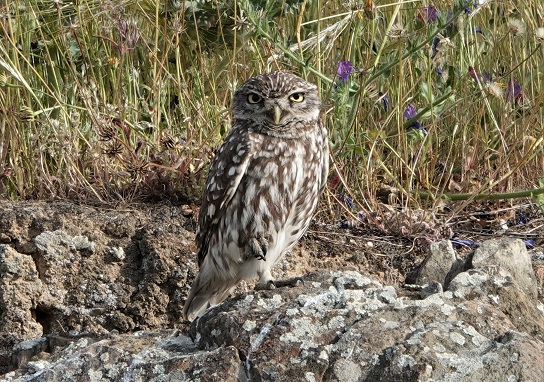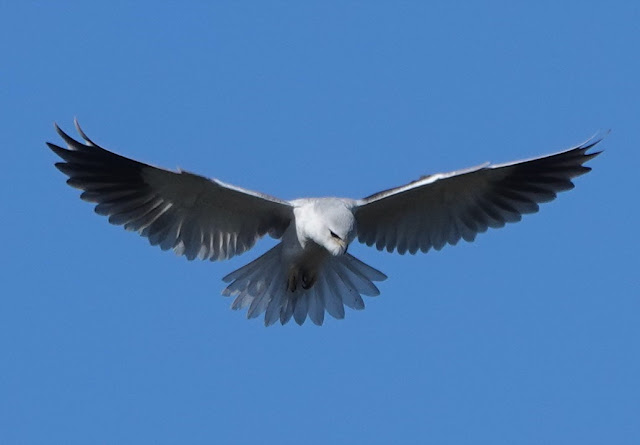Lockdown birding Part 12
 |
| Sardinian Warbler (Martin Kelsey) |
Teased by its characteristic scratchy rattle, I lean over the balcony to try to get a view of the Sardinian Warbler. Movement through the leaves in the hedge betrays its presence as it works its way upward. It rises in a short flight to land on the old rusty electricity pole beside the house. Smart and striking, with the perfect contrast of white throat and matt black head, with a vermilion orbital ring. Like the call, its song scratches its way through a gentle set of even notes, rather conversational and intimate. Until off it launches in a surprise jerky airbourne performance, climbing into the sky with its long, white-sided tail see-sawing in fluttery rhythm. At the climax, the descent starts and with a final tease, the bird cocks its tail as it sneaks back into the brambles.
The Sardinian Warbler occurs around the Mediterrean and is around here the widespread breeding Sylvia warbler. At this time of the year, I would normally be out in a favourite area of broom and lavander scrub, with scattered cork oak trees, just twenty or so minutes from where I am standing, with a very good chance of finding all eight species of Sylvia warblers that breed or migrate through Extremadura. Under lockdown, that Sylvia-fest may have to wait another year. In the garden, we have two species: the jaunty Sardinian and Blackcaps. The latter are much more subdued in plumage and in behaviour too. Very common here in winter, we have also a breeding population. In the spring, our garden Blackcaps keep themselves concealed deep in the foliage where an almond and bay tree come together, bound in union by ivy. Occasional short alarm calls may be provoked by passing cats. However, unlike the Sardinian, the Blackcap song is a rich melody of notes that once earned it the title of "the Northern Nightingale".
We have now completed six weeks of lockdown, and since my last tally (see https://www.birdingextremadurablog.com/2020/04/lockdown-birding-part-9.html) I have added a futher three species to the bird list, which now stands at 70. They are Black Stork, Golden Eagle and Golden Oriole.
 |
| A drift of spring hail (Martin Kelsey) |
It has been a magnificently wet spring this year - indeed it is the wettest April locally for years. This was at its most dramatic just a couple of days ago with an afternoon thunderstorm which left great drifts of hailstones on the ground, some of which remained in place all night. The hail shredded the leaves of the chard and lettuce in the vegetable garden.
 |
| Small-flowered Tongue Orchid (Martin Kelsey) |
The rain and overcast weather has not been great for seeing many butterflies, but we have been surrounded in the garden and olive grove by a spectacle of wild flowers. I walk slowly around the olive grove three times a day, as a short form of exercise. I rarely have the opportunity to do so in a normal spring. So whether I have simply not noticed them before, or the neighbour's sheep have nibbled them in other years, or whether it is thanks to such optimal weather, but it filled me with joy to find a little colony of Small-flowered Tongue Orchids (Serapias parviflora) growing just behind the house. A true gift and recompense.



Comments